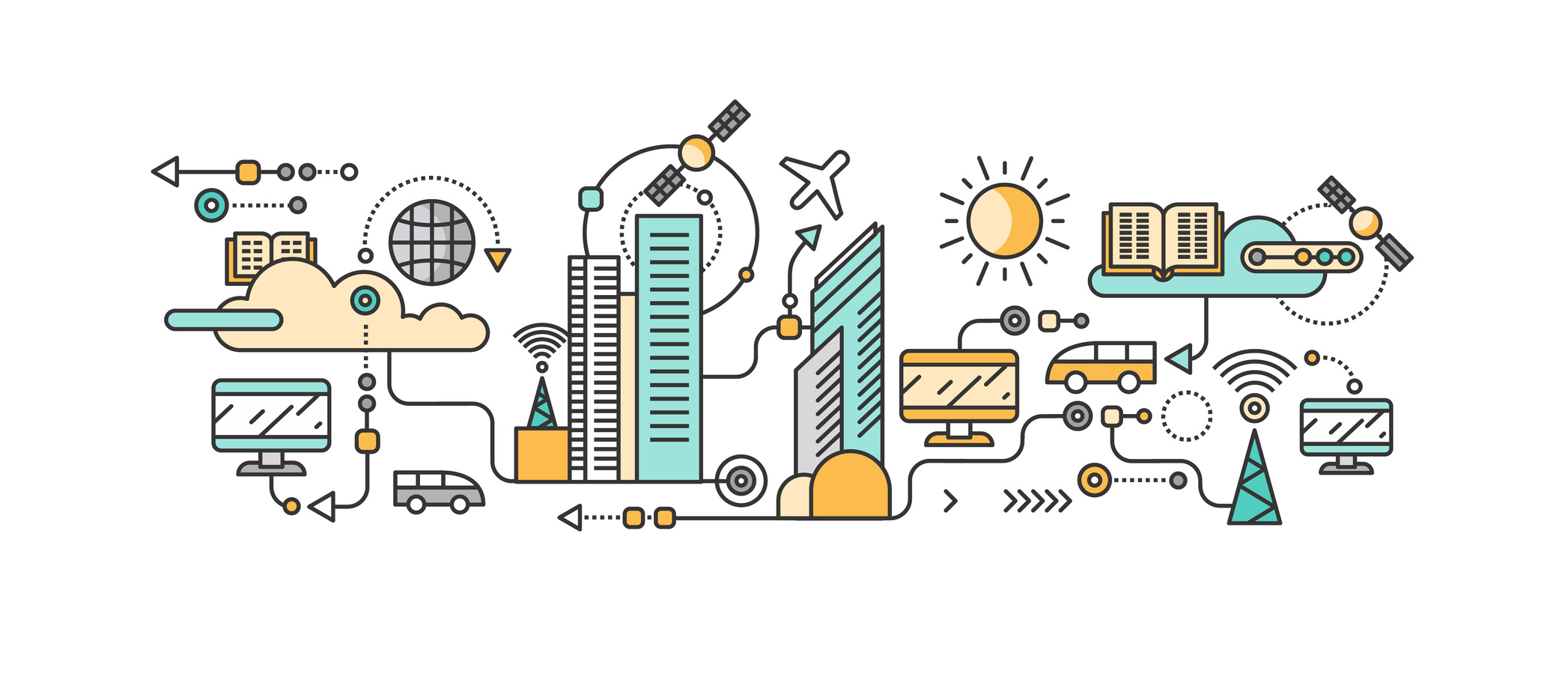Marshall McLuhan predicted the Internet as an "extension of consciousness" thirty years before its commercialization. The term ‘global village’ now has outgrown the scope of it’s meaning into something much more advanced and larger than life requiring new terms to be introduced.
As world urbanization continues to grow and the total population expected to double by 2050, there exists an increased demand for intelligent, sustainable environments that reduce environmental impact and offer citizens a high quality life. A smart city or an intelligent city is an urban development vision to integrate multiple information and communication technology solutions in a secure fashion to manage a city’s assets – the city’s assets include, but not limited to, local departments like : government, law enforcement and management , information systems, schools, libraries, transportation systems, hospitals, utility services like : power plants, water supply networks, waste management, and other community services.
Major technological, economic and environmental changes have generated interest in smart cities, including climate change, economic restructuring, the move to online retail and entertainment, ageing populations, urban population growth and pressures on public finances.
Due to the breadth of technologies that have been implemented under the smart city label, it is difficult to come to a precise definition of a smart city but there are some factors that make up the basic definition of a smart city. A ‘smart city’ brings together technology, government and society to enable the following characteristics:
• application of a wide range of electronic and digital technologies to communities and cities
• use of ICT to transform life and working environments within the region
• a smart economy
• smart mobility
• smart living
• smart energy
• smart governance
• smart communications
• smart buildings & networks
• territorialisation of practices that brings ICTs and people together to enhance the innovation and knowledge that they offer
New Internet technologies promoting cloud-based services, the Internet of Things (IoT), real-world user interfaces, use of smart phones and smart meters, networks of sensors and RFIDs, and more accurate communication based on the semantic web, open new ways to collective action and collaborative problem solving. According to estimates that the global market for smart urban services will be $400 billion per annum by 2020.
While this opens up significant opportunities in economic growth, it also creates many challenges to be addressed like population explosion, high cost of living , rising levels of pollution , increased crime rates , massive investment in infrastructure requirements ($10 Trillion by 2025) , exponential growth of data , potential cultural clashes.
The information and knowledge gathered are keys to tackling inefficiency. Through the use of sensors integrated with real-time monitoring systems, data are collected from citizens and devices - then processed and analyzed. Smart city applications are developed with the goal of improving the management of urban flows and allowing for real time responses to challenges. A smart city may therefore be more prepared to respond to challenges than one with a simple 'transactional' relationship with its citizens.
Examples of Smart City technologies and programs have already been implemented in Milton Keynes, Southampton , Amsterdam, Barcelona and Stockholm. The European Union (EU) has devoted constant efforts to devising a strategy for achieving 'smart' urban growth for its metropolitan city-regions with focus on strengthening innovation and investment in ICT services for the purpose of improving public services and quality of life.
Please login to Comment




No Comment Found